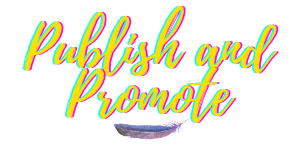7 Essential Types of Literary Conflicts
If you want to write books, having conflict is an essential part of any story.
Conflict propels the story and challenges the characters, revealing their true selves and beliefs.
Disclosure: Some links above may contain affiliate partnerships, meaning, at no additional cost to you, Publish and Promote may earn a commission if you click through to make a purchase. You can read our affiliate disclosure in our privacy policy.
If you want to include them in your book, you will need to know the main types of literary conflicts.
Table of Contents
What is A Literary Conflict?
A literary conflict is a literary device used to drive a narrative and story forward.
The conflict is the primary obstacle that separates your main character from what they want. While books can have multiple conflicts, there is usually one primary conflict.
Why You Should Use Literary Conflicts In Your Books
If you want to create a successful book, you will need to find some kind of conflict to include since it is a central part of any book.
When you use literary conflicts with characters, you expose layers of the character to the readers.
You begin to understand the deeper intentions, motivations, flaws, and actions of characters.
Plus, having conflicts to overcome gives the reader a reason to stay invested to see if the character can overcome them.
How To Use Literary Conflicts In Your Writing
Before beginning your story, decide on the literary conflict you want to incorporate.
You might even choose to include a few different conflicts. For example, you could have someone at sea in a storm (character versus nature), who is also being chased by a killer whale (character versus character).
Whatever conflict(s) you choose to use, you will need to treat the conflict itself like its own character
You will want to take the time to outline how the conflict will work in your story and what the character(s) are up against.
7 Types of Literary Conflicts
Now, let’s explore some central conflicts you can incorporate into your books, having covered what literary conflicts are, why they are beneficial, and how to utilize them.
#1 – Character versus self
One of the most popular literary conflicts for writers to use is the character versus themselves.
Reading this, we can’t help but feel a sense of connection to the way it reflects our own human experiences of moving through the world.
Their journey through the story requires them to confront and overcome their flaws and shortcomings. The main barrier blocking their path to success is their self.
#2 – Character versus technology
While we appreciate the benefits of technology, there is an underlying concern about its potential for excessive control.
This type of literary conflict masterfully captures the essence of the fear, skillfully portraying the potential consequences. It can be science experiments that have grown dangerously potent, technology that starts displaying signs of sentience, or some other unforeseen phenomenon. Remember the Terminator movie series with Arnold Schwarzenegger?
#3 – Character versus nature
If you have ever read a book or seen a movie where some characters are battling against horrendous weather, you can vividly imagine the dark, stormy skies and the relentless gusts of wind.
The weather becomes a formidable opponent, constantly testing the character’s strength and determination. In some instances, a wild animal, such as in Moby Dick, becomes the focal point of the story.
In addition, this can involve diseases, like one character’s courageous battle with a terminal condition.
#4 – Character versus character
Throughout the history of literature, conflicts between characters have consistently captivated readers.
The hero versus villain narrative is as old as storytelling itself.
Now, this doesn’t always mean it follows the cliché “bad guy versus good guy” trope with superheroes and grand battles. It can be family battles, divorces, or other painful conflicts.
#5 – Character versus society
Literary conflict can emerge from the rule of an authoritarian government, the tyranny of an oppressive system, or the constraints of societal norms and cultural customs.
This could also include elements like systemic racism and systems deliberately created to marginalize certain groups.
#6 – Character versus supernatural
This type of conflict arises from the protagonist engaging in a struggle against a supernatural being. This can involve ghosts, demons, aliens, or some other unidentified phenomenon.
This literary conflict is effective because unlike character versus character, the reader is often left uncertain about the character’s adversary or the entity’s abilities.
#7 – Character versus fate
Fate conflict occurs when a character confronts a predestined or predetermined destiny and actively opposes it.
Conflicts between individuals and destiny are highly effective as they generate anticipation in the audience, leading to convergence. “To converge” signifies the coming together at a specific point, the inclination towards each other, or the attainment of a mutual conclusion. When creating our narratives, we frequently seek a certain level of convergence.
Convergence involves directing the audience’s attention toward a specific moment that holds the promise of a potential outcome. This captivates the audience as they are compelled to continue reading to witness the anticipated outcome and understand its unfolding. By introducing a conflict between a person and fate, it becomes an instant part of the story.
Liked this post? Share it with other writers and authors.

